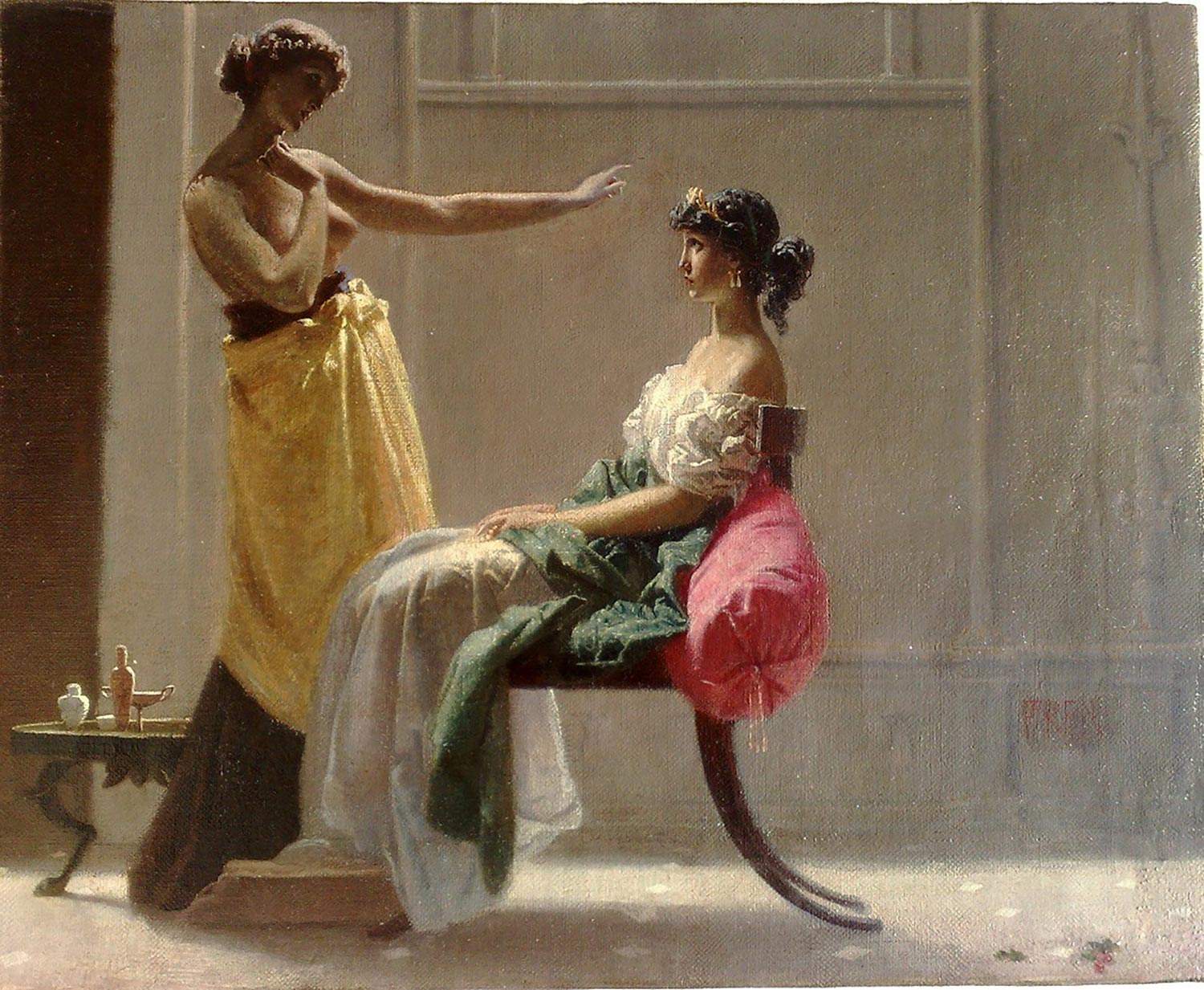An exhibition on Federico Faruffini, a great protagonist of the Italian 1800s.
A major exhibition dedicated to one of the great protagonists of 19th-century Italian art, Federico Faruffini (Sesto San Giovanni, 1833 - Perugia, 1869), is coming to the Villa Borromeo d’Adda in Arcore (Monza Brianza) from April 9 to June 6, 2021. The exhibition is titled Io guardo ancora il cielo. Federico Faruffini and exhibits more than sixty works including oil paintings, watercolors, drawings, engravings, original photographs, letters and period materials from private collections throughout Italy.
The exhibition also aims to put the spotlight on19th-century Italian art, which is less well-known than French art and often unjustly neglected. The Italian art scene of the 19th century, however, reveals aspects of extraordinary interest and fascinating personalities, worthy of being told even to a lay audience. And among the artists of the second half of the 19th century stand out characters whose research changed the fate of Italian painting, playing important roles on the international scene as well, among whom, without a doubt, stands out Federico Faruffini, an irregular and tormented genius, a key figure in overcoming the Romantic and academic canons that still cluttered the Lombard art scene in the mid-19th century.
The protagonist of a dramatic personal affair that well testifies to the existential restlessness of the post-Romantic generation, Faruffini was born in Sesto San Giovanni in 1833. Educated in Pavia, where the figure of Giacomo Trecourt guaranteed an openness to the new that in Milan, due to the looming presence of Hayez’s lesson, was struggling to establish itself. A rebellious and difficult personality with an unstable temperament, Faruffini lived an existence made up of uncertainties, second thoughts, and sudden changes of course, until his suicide in 1869, at the age of 36, after having unsuccessfully tried to find a cure to his torments by abandoning painting to open a photographer’s studio and after having sought his way between Paris, Milan, Rome and Perugia. His works, often innovative and at times surprising, found little reception in Italy, while garnering notable success in Paris. Eternally torn between the desire to win critical acclaim and the urge to experiment and break out of the canons imposed by academic teaching, Faruffini is constantly in search of himself, never satisfied, always ready to question himself.
Faruffini’s extraordinary talent for renewing pictorial genres that were also well-established in official circles (history above all) makes him one of the main precursors of the Scapigliata season, also thanks to his closeness with his friend and fellow student Tranquillo Cremona. But his research constitutes an important moment of transition to modernity for many other artists of later generations as well.
The exhibition recounts, in a path set on a deeply “emotional” narrative, Faruffini’s personality and research through a wide series of works accompanied by a rich apparatus of sketches, letters, and personal recollections that restore the complexity and originality of this very complex and multifaceted figure. The exhibition is also accompanied by a catalog that aims to comprehensively recount the artist’s research and figure, as well as to bear witness to the works in the exhibition. In addition, on the occasion of the exhibition, artist Enrica Borghi will create an installation in homage to Federico Faruffini, dedicated to the work La Toeletta antica. The work will be on display on the second floor of Villa Borromeo d’Adda, with other works by Borghi, for the duration of the exhibition.
Image: Federico Faruffini, La Toeletta antica (1865; oil on canvas, 40 x 49.5 cm; Private collection).
 |
| An exhibition on Federico Faruffini, a great protagonist of the Italian 1800s. |
Warning: the translation into English of the original Italian article was created using automatic tools. We undertake to review all articles, but we do not guarantee the total absence of inaccuracies in the translation due to the program. You can find the original by clicking on the ITA button. If you find any mistake,please contact us.





























